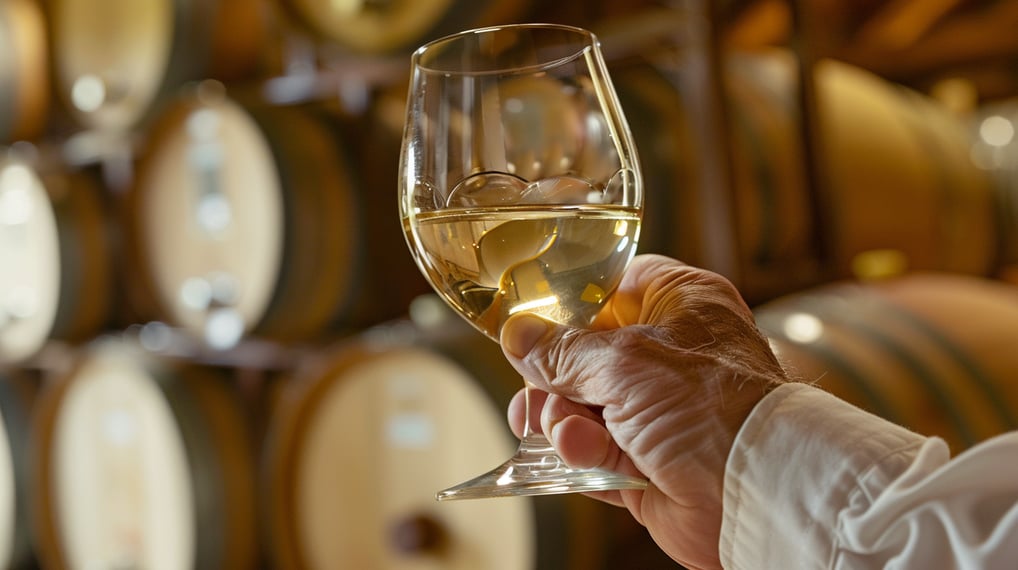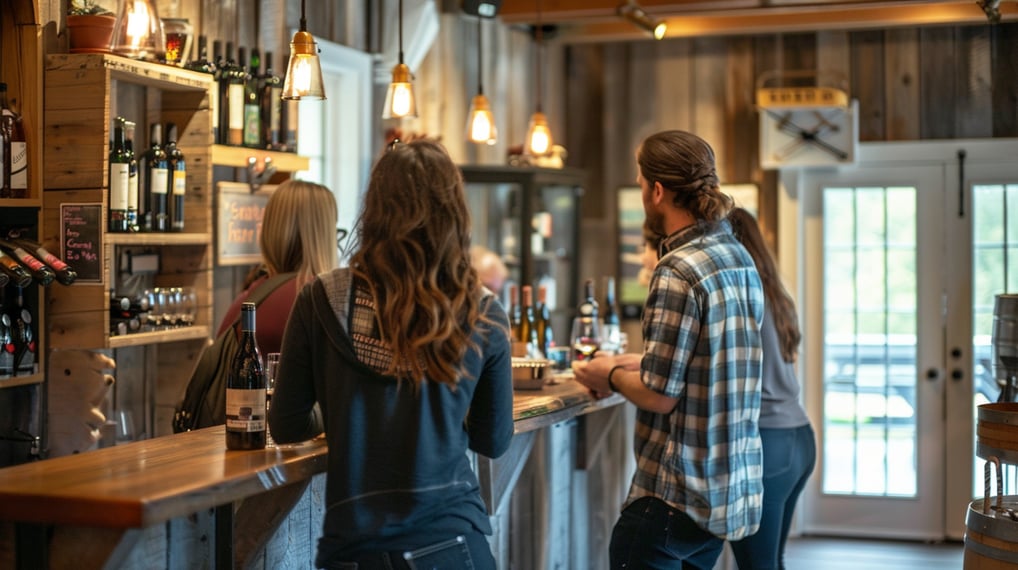Wine Lover's Tour of North Fork: Top Vineyards to Visit
Embark on a journey through the vineyards of North Fork, a hidden gem for wine enthusiasts, where top vineyards invite you to savor the region's finest wines amidst picturesque landscapes.
07/31/2024

If you're a wine lover looking to explore new vineyards, then a visit to North Fork should be on your bucket list. This charming region, located on the eastern end of Long Island in New York, is home to some of the finest wineries in the United States. In this article, we'll take you on a journey through North Fork's top vineyards, exploring their rich history, unique climate, and of course, the exceptional wines they produce.
Understanding North Fork's Wine History
Before we delve into the vineyards themselves, it's important to understand the vibrant wine history of North Fork. The region's wine industry had humble beginnings, dating back to the 1970s when a few pioneering wineries set up shop. Since then, North Fork has grown into a renowned wine destination, attracting enthusiasts from around the world.
North Fork's wine history is a tapestry woven with passion, innovation, and a deep respect for the land. The early days of winemaking in this region were filled with challenges and triumphs as visionaries like the Hargraves dared to dream of vineyards where potatoes once grew. Their perseverance and dedication laid the foundation for what would become a flourishing industry.
The Birth of North Fork's Wine Industry
The establishment of the Hargrave Vineyard by Louisa and Alex Hargrave in 1973 marked the birth of North Fork's wine industry. This bold venture paved the way for other wineries to follow suit, ultimately shaping the region's viticulture landscape.
As the first commercial vineyard in the area, Hargrave Vineyard sparked a revolution, proving that Long Island's maritime climate and soil composition were ideal for grape cultivation. The Hargraves' pioneering spirit inspired a wave of vintners to plant their own vines, each contributing to the rich tapestry of North Fork's wine heritage.
The Evolution of Wine Making in North Fork
Over the years, North Fork's winemakers have honed their craft, mastering the art of wine making. Today, the region boasts a diverse range of grape varietals, from classic Bordeaux blends to elegant Chardonnays and vibrant Merlots. Each winery has its unique style and approach, resulting in a plethora of flavors to indulge in.
With a focus on sustainable practices and a commitment to quality, North Fork's winemakers continue to push the boundaries of what is possible in the world of viticulture. The evolution of wine making in this region is a testament to the ingenuity and passion of those who call North Fork home, as they strive to create wines that capture the essence of the land and the spirit of innovation.

The Unique Climate of North Fork
What sets North Fork apart from other wine regions is its unique climate, which plays a pivotal role in shaping the character of its wines.
Nestled on the northeastern tip of Long Island, North Fork benefits from a maritime climate that is heavily influenced by the surrounding bodies of water. The cool breezes from the Long Island Sound help to moderate temperatures, creating ideal conditions for grape cultivation. This unique microclimate allows for a longer growing season, giving the grapes more time to develop complex flavors and aromas.
How Climate Influences Wine Quality
The maritime climate of North Fork, with its cool breeze from the Long Island Sound, creates a favorable environment for grape cultivation. The combination of warm summers and moderate winters allows the grapes to ripen slowly, developing complex flavors and maintaining a desirable acidity level.
Moreover, the proximity to the water also plays a crucial role in protecting the vineyards from extreme temperature fluctuations. This stability in temperature helps the grapes achieve optimal ripeness, resulting in wines with a perfect balance of sugar and acidity.
North Fork's Unique Terroir
In addition to its climate, North Fork's terroir contributes to the distinctiveness of its wines. The region's sandy soils, influenced by glacial deposits and seashells, add mineral nuances to the grapes, resulting in wines with a characteristic briny note.
Furthermore, the maritime influence extends beyond the climate to the terroir, with the vineyards benefiting from the mineral-rich soils and the cooling effect of the nearby waters. These factors work in harmony to create wines that are not only expressive of the grape varieties grown but also reflective of the unique environment in which they are cultivated.
Exploring North Fork's Top Vineyards
North Fork, a gem on Long Island, New York, is celebrated for its picturesque vineyards and award-winning wines. The region’s maritime climate and fertile soils are ideal for cultivating a variety of grape varietals, leading to the creation of distinct and flavorful wines.
Visiting North Fork's vineyards offers more than just exceptional wine tasting; it's an opportunity to delve into the rich history and culture of the area. Many vineyards here are family-owned, passed down through generations, each contributing to the unique and vibrant wine scene of North Fork.
Vineyard Selection Criteria
In selecting the top vineyards, we considered wine quality, historical significance, and the overall visitor experience. Our list aims to showcase the diversity of North Fork’s wine culture, featuring everything from boutique wineries specializing in small-batch productions to larger estates that offer comprehensive tours and tastings.
Detailed Overview of Each Top Vineyard
Bedell Cellars: Renowned for its commitment to sustainable farming and innovative winemaking, Bedell Cellars in Cutchogue stands as a testament to the quality of North Fork wines. Visitors can enjoy a variety of tastings in their beautifully designed tasting room, which overlooks a breathtaking expanse of vineyards.
Paumanok Vineyards: This family-operated vineyard captures the essence of North Fork’s terroir. At Paumanok Vineyards in Aquebogue, guests are treated to an array of wines, including their celebrated Chenin Blanc. The vineyard's deck offers a stunning view, providing a perfect backdrop for wine tasting.
Macari Vineyards: Set on a 500-acre waterfront estate in Mattituck, Macari Vineyards is known for its rich biodiversity and environmentally friendly practices. The winery provides an array of tastings, including some of their award-winning reds and whites, amidst an ambiance filled with scenic beauty.

Wine Tasting Tips for Beginners
Now that you're familiar with North Fork's vineyards, it's time to prepare for an unforgettable wine tasting experience. Here are some tips to enhance your palate and fully savor the flavors of the region's wines.
Before embarking on your wine tasting journey, it's essential to understand the significance of the wine glass. The shape and size of the glass can influence how the wine tastes and smells. For example, a larger bowl allows for more aeration, enhancing the wine's aromas, while a narrower rim concentrates the aromas for a more intense experience.
How to Taste Wine Like a Pro
Start by examining the wine's appearance, then take a moment to inhale the aromas, allowing your senses to fully immerse in the experience. When tasting, let the wine coat your palate, paying attention to its texture and depth of flavors.
Furthermore, don't be afraid to swirl your wine in the glass before tasting. This action helps release the wine's aromas, giving you a preview of the flavors to come. As you take your first sip, let the wine linger on your palate, exploring the different taste sensations that unfold.
Understanding Wine Aromas and Flavors
Developing your wine vocabulary can greatly enhance your enjoyment. Pay close attention to the different aromas and flavors present in each wine, from fruity notes of berries to complex hints of oak and spices.
Additionally, consider the concept of "terroir," which refers to the environmental factors that influence a wine's characteristics, such as soil, climate, and winemaking techniques. Understanding terroir can deepen your appreciation for the unique qualities of each wine and the region it comes from.
Planning Your North Fork Wine Tour
Before embarking on your adventure to North Fork, it's essential to plan your trip carefully to make the most of your time.
Best Time to Visit North Fork Vineyards
The ideal time to visit North Fork's vineyards is during the warm months of spring, summer, and early autumn. This is when the vineyards are in full bloom, and you can witness the grapevines heavy with fruit.
Essential Things to Pack for a Wine Tour
Make sure to bring comfortable footwear for walking through the vineyards, as well as a hat and sunscreen to protect yourself from the sun. And, of course, don't forget to bring a camera to capture the breathtaking views and delightful moments.
With its rich wine history, unique climate, and exceptional vineyards, North Fork offers an unforgettable experience for wine enthusiasts. Whether you're a seasoned connoisseur or a curious beginner, a visit to these top vineyards will leave you with an appreciation for the region's outstanding wines and the passion behind their creation. So why wait? Start planning your wine lover's tour of North Fork today and immerse yourself in the beauty and flavors of this remarkable destination.